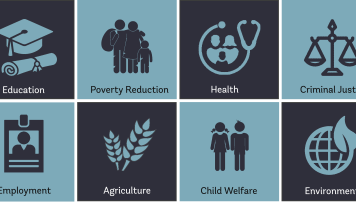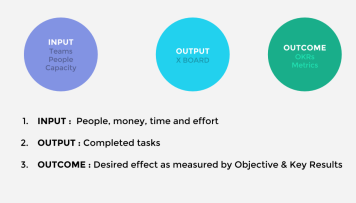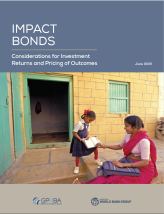
Imagine if you could bring private sector resources and skills to social projects. Impact Bonds (IBs) are an innovative Results-Based Financing (RBF) mechanism that tie financial returns and payments to specific results incentivizing investors and service providers.
As governments and development partners seek to meet the Sustainable Development Goals (SDGs) with limited financial resources, it is becoming apparent that we need to crowd in private investors, capital and expertise to reach the goal.
The World Bank Group (WBG) along with other multilateral development banks (MDBs) have emphasized the need to shift focus from “billions” in Official Development Assistance (ODA) to “trillions” in investments of all kinds to achieve the SDGs. Impact Bonds make social sectors more “investible” and support the WBG’s agenda to maximizing financing for development.
While the WBG has ample experience with private sector participation in infrastructure sectors, this experience is limited in social sectors where programs are traditionally funded from public resources. Impact bonds change this paradigm by monetizing the benefits of social outcomes and making investments in social programs attractive to private investors.
Delivering basic public services to the world’s poor or underprivileged sometimes requires innovative, even experimental solutions. In addition to lack of capital to fund solutions to these problems, private investors usually aren’t willing to take a risk on projects that aren’t always a “sure thing.” Impact bonds, a relatively new funding approach successfully bring together private investors, governments and services providers to unlock funding for projects that focus on delivery of social and environmental outcomes.
At the Global Partnership for Results-Based Approaches (GPRBA), for the past 15 years we have been promoting different types of RBF instruments that link funding to actual results achieved. Impact bonds are one of those approaches we have been looking at recently, as they create the opportunity to make social programs attractive to private investors making them “investible”.
What are impact bonds?
Impact bonds are innovative, performance-based, contracts between an investor, an outcome funder and a service provider that tackle a social or environmental challenge. Also known as pay-for- success bonds and social benefit bonds, impact bonds aren’t really “bonds” in the conventional sense. They are a form of public-private partnership that rewards investors for successfully delivering impact.
How does it work?
First, investors—which could be a private sector actor or an NGO—provide the upfront capital to a service provider to carry out an intervention that targets a population in need. Once the desired results are achieved, outcome funders, typically a donor or a government, repay the investor at a premium. The investor thus generates a return on its investment and the outcome funder only pays for success. There are two types of impact bonds: In a Development Impact Bond (DIB), the role of the outcome funder is played by third parties as opposed to a Social Impact Bonds (SIB) where the role is played by the government.
Where did impact bonds get their start?
The first social impact bond was launched in 2010 in Petersborough, United Kingdom and targeted short-sentence male prisoners with the aim of reducing re-offending. Prisoners were provided with a mentor and support finding housing, treating drug addiction or securing a job up to 12 months after their release from jail. The £5 million program, which ended in 2015, was a success; it reduced recidivism by more than eight percent.
The first development impact bond was implemented in Rajasthan, India in 2014 to enroll out-of-school girls and improve the performance of boys and girls in English, Hindi, and math. It targeted 15,000 children, of which 9,000 were girls, in the Bhilwara District. Going door-to-door, the service provider, Educate Girls, identified out-of-school girls and engaged directly with their families to encourage enrollment. The program also helped boys and girls in grades three-five improve their schoolwork.
How many impact bonds are in operation now?
Today, 151 impact bonds are active globally, eight of them are in middle-income and low-income countries. The countries with most impact bonds are the United States and the United Kingdom.
Some 28 impact bonds are in the implementation and design stages in developing countries. Most popular sectors are health, employment, agriculture, education, and social welfare.
How is the World Bank involved?
GPRBA, housed in the World Bank, provides innovative financing solutions that link funding to results. Impact bonds are one of the RBF approaches that GPRBA adopted to ensure access to basic services like water and sanitation, energy, health and education for low-income families and communities that might otherwise go unserved.
Useful Resources
Social Finance
Brookings
Impact Bond Working Group










